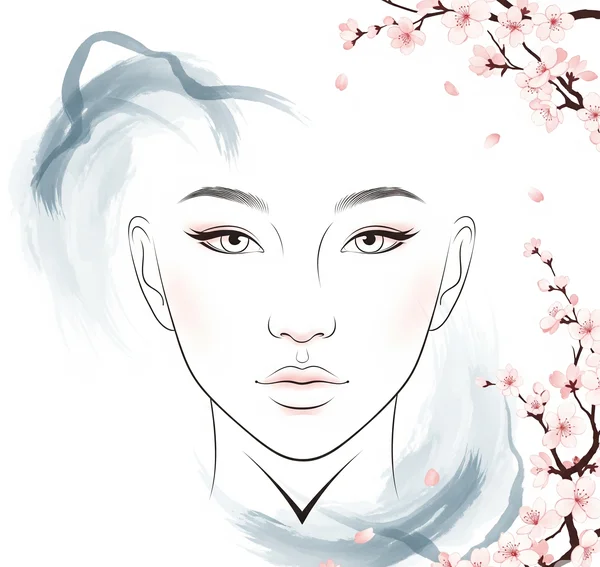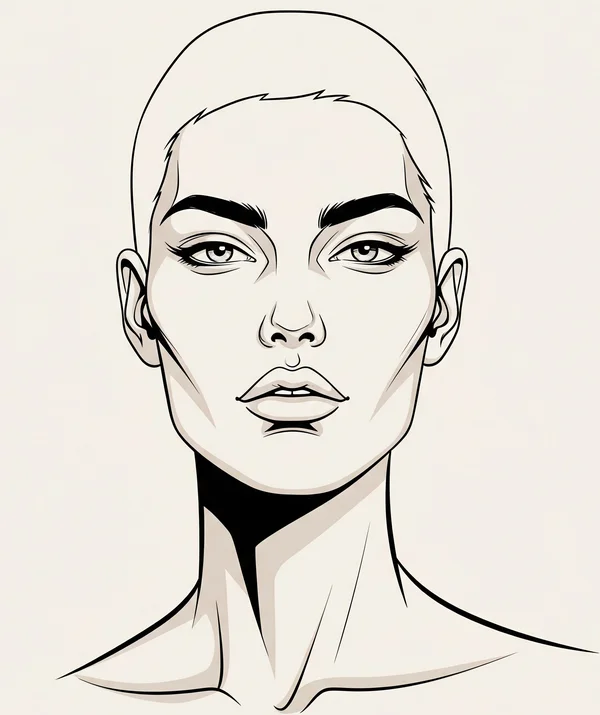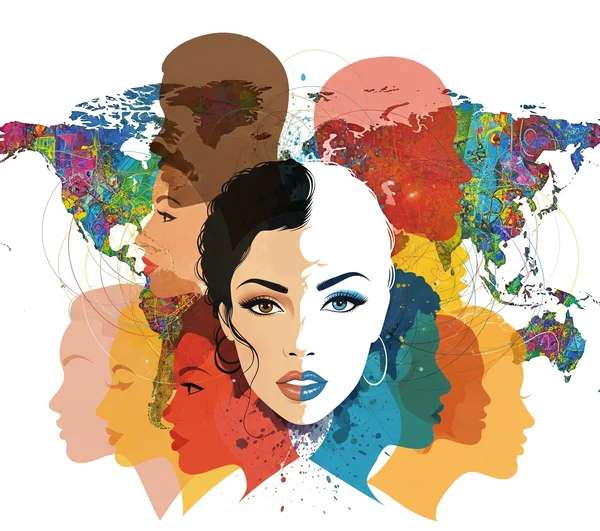Cultural Perceptions of Beauty: Face Shapes Around the World
What defines a beautiful face? Is it a delicate jawline, high cheekbones, or soft, full cheeks? The answer, it turns out, is as diverse as humanity itself. What is considered the most beautiful face shape in the world? This question opens a fascinating exploration into cultural beauty standards and how face shape perception varies dramatically across the globe. This article will journey through different cultures to understand global beauty and appreciate the rich tapestry of ethnic face shapes. Before we explore these ideals, it's helpful to first understand your own unique features with an objective face shape analyzer.
The V-Shaped Jawline: An East Asian Beauty Ideal
In many parts of East Asia, particularly in countries like South Korea, China, and Japan, a slender, oval face that tapers to a sharp, narrow chin has become a prominent beauty ideal. This is often referred to as a "V-shaped face" or "V-line."
Associations with Youth and Femininity
The v-shaped face is widely associated with youth, grace, and femininity in these cultures. Its delicate appearance is often seen as a hallmark of beauty, contrasting with wider or more angular jawlines. This face shape perception is heavily reinforced by celebrities, models, and influencers in the region.
The Influence of Modern Media
Modern media, from K-pop to popular dramas, has played a significant role in popularizing the v-shaped face. This has created a powerful cultural beauty standard that influences everything from makeup techniques designed to create the illusion of a slimmer jaw to the popularity of related cosmetic procedures.

Strong Jawlines and High Cheekbones: Western Perceptions of Strength
In contrast, many Western cultures often celebrate a different set of facial features. The western vs eastern beauty standards provide a clear example of this diversity.
Ideals of Confidence and Maturity
A strong jawline and high, defined cheekbones are frequently admired in many Western societies. These features are often associated with confidence, strength, and maturity. For men, a squared, strong jaw can signify masculinity, while for women, high cheekbones are often seen as a sign of elegance and sophistication. This highlights a different kind of aesthetic diversity.
Comparing Male and Female Standards
While the appreciation for a strong jawline is common, the ideal manifestation differs between genders. The emphasis for men is often on width and angularity, whereas for women, it's more about definition and a sleek contour. This nuance shows the complexity within broader cultural beauty standards.

The Fullness of Youth: Valuing Round and Soft Face Shapes
Moving beyond the East-West binary, many cultures around the world hold different ideals. In various societies, a fuller or round face shape is celebrated.
Perspectives from African and South Asian Cultures
In several African and South Asian cultures, a softer, rounder face is often associated with health, vitality, and youthfulness. These ethnic face shapes are seen as beautiful and desirable, diverging from the angular or sharply defined ideals seen elsewhere. This appreciation for softer features is a core part of global beauty.
Links to Health and Vitality
Historically, a fuller face could signify good health and adequate nutrition, making it an attractive trait. This face shape perception persists in many communities, where it represents well-being and approachability, showcasing a different but equally valid beauty standard around the world.

Historical and Social Roots of Face Shape Perception
These diverse cultural beauty standards didn't appear in a vacuum. They are deeply rooted in history, social structures, and media.
How Class and History Shaped Ideals
Throughout history, features associated with the ruling or leisure class often became aspirational. For instance, if a life of hard labor led to a more weathered and muscular facial appearance, a softer face might have become a symbol of aristocracy. These historical undercurrents have subtly shaped modern face shape perception.
The Power of Media Representation
From classical paintings to modern cinema, the faces we see in media have a powerful effect on shaping our collective idea of beauty. The dominant faces in global media can either reinforce existing standards or introduce new ones, constantly influencing the landscape of global beauty.
Globalization and the Blurring of Beauty Standards
In our interconnected world, the lines between different cultural beauty standards are beginning to blur.
The Impact of Social Media on Global Beauty
Social media platforms expose us to a wider range of faces and beauty ideals than ever before. This has led to a cross-pollination of trends, where features admired in one culture can gain popularity in another, contributing to a more dynamic sense of global beauty.
The Rise of a "Hybrid" Beauty Ideal
Some sociologists observe the emergence of a "hybrid" or "global" beauty ideal that combines elements from different cultures—for example, the high cheekbones of a Western model with the jawline of an East Asian star. This reflects the complex nature of modern aesthetic diversity.

Celebrating Global Beauty: The Uniqueness in Every Face Shape
In the end, this journey across continents and cultures reveals a simple truth: there is no single "most beautiful face shape in the world." Beauty is a rich, diverse, and fluid concept. The features celebrated in one corner of the world may differ from those in another, but each standard tells a story about history, values, and human expression.
Appreciating this aesthetic diversity allows us to see beauty in all its forms. The first step towards appreciating your unique look is understanding it objectively. You can discover your face shape with our tool to see your features clearly, free from any single cultural lens. How are face shapes viewed in your culture? We'd love to hear your perspective in the comments below!
Face Shapes and Cultural Beauty
What is considered the most beautiful face shape in the world?
There is no universal answer. Beauty standards around the world are incredibly diverse. What is considered ideal in one culture, such as a v-shaped face, may be different from the ideal in another, which might value a strong jawline or a round face shape.
Why is a V-shaped face so popular in some Asian countries?
The popularity of the v-shaped face in many East Asian countries is often linked to its association with youth, femininity, and delicacy. This ideal has been heavily amplified by modern media, including K-pop and popular television dramas, making it a prominent cultural beauty standard.
How do Western and Eastern beauty standards for face shapes differ?
While it's a generalization, a common point of comparison in western vs eastern beauty standards is the jawline. Many Western ideals appreciate a strong, defined jaw, while many East Asian ideals favor a softer, more tapered "V-line." However, it's important to remember that immense diversity exists within both regions.
Are beauty standards for face shapes changing?
Yes, beauty standards for face shapes are constantly evolving. Globalization and the rise of social media are leading to a greater exchange of ideas, creating a more dynamic and sometimes blended "hybrid" sense of global beauty. To understand where you fit in this beautiful tapestry, you can start by getting an objective facial analysis.